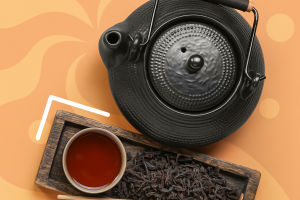Tea generally consists of the leaves and buds of the tea plant. Tea beverage made from tea leaves is one of the three major drinks in the world.
Tea originated in China and was first used as a sacrifice. From the late Spring and Autumn periods, it was used as a dish, in the middle of the Western Han Dynasty, and in the late Western Han Dynasty, it was developed as a high-grade palace drink.
It was after the Western Jin Dynasty that the popularization of folk was a common drink. The earliest remains of artificial tea cultivation have been found in Zhejiang, China, with a history of more than 6000 years.
The composition of tea became clear in the early 19th century. After modern scientific separation and identification, tea contains more than 450 organic chemical components, and inorganic mineral elements 40.
Tea is refreshing because it is rich in caffeine, which has the effect of refreshing the mind. If the body is tired, drinking some of it in an appropriate amount can play a certain role in improving effectiveness and help improve work efficiency.
However, it is generally not recommended to drink tea in daily life, because tea contains more caffeine. This may lead to cerebral cortex excitation, and easy to cause some disturbance to the quality of sleep at night.
People in more than 100 countries and regions around the world enjoy drinking tea. Some places promote tea drinking as an artistic enjoyment. Tea drinking methods vary from country to country.
Sri Lanka: Residents of Sri Lanka love to drink strong tea, which is bitter and astringent, but they relish it. The country's black tea is sold around the world, and there is a large business in Colombo, the capital, that sells tea. There is a tea tasting department, where experts taste the tea by the tongue, and re-check the grade and price.
Britain: People from all walks of life in Britain enjoy drinks. Tea is almost the national drink of Britain. The British like their tea freshly brewed and strong, with a lump or two of sugar and a dash of cold milk.
Thailand: Thai people like to add ice to tea, suddenly cool, even frozen, this is iced tea. In Thailand, local tea drinkers do not drink hot tea, and it is usually outside guests who want hot tea.
Mongolia: Mongolians love brick tea. They pound brick tea into a powder in a wooden mortar, boil it in a pot with water, and then add some, milk and goat's milk.
New Zealand: New Zealanders consider drinking tea one of life's greatest pleasures. Many organs, schools, factories, and mines also set a special tea-drinking time. Township tea shops and teahouses abound.
Mali: Malians love to drink tea after dinner. They put tea leaves and water in a teapot and then simmer them on a clay stove. Boil the tea with sugar and pour one cup per person.
Their method of boiling tea is different. Every day, they get up and boil water in a tin can and throw in tea leaves. Let it fry and cook until the cured meat cooked at the same time is cooked, then eat and drink tea at the same time.
Canada: Canadians make tea in a special way, first hot the clay pot, put a teaspoon of tea, and then pour boiling water on it, soak it for seven or eight minutes, and then pour the tea into another hot pot for drinking. Cheese and sugar are usually added.
Egypt: Sweet tea from Egypt. When the Egyptians welcomed guests, they often brought a cup of hot tea with a lot of sugar in it. After drinking only two or three cups of this sweet tea, the mouth would feel sticky and they would not even want to eat.
North Africa: Peppermint tea from North Africa. North Africans drink tea, like a few fresh mint leaves and some rock sugar in the green tea flower, and drink cool and delicious. It is not polite for a visitor to drink all three cups of tea offered to him by the host.
South America: Mate tea of South America. In many South American countries, the leaves of the local Made tree are used to make tea, which is both refreshing and refreshing. They were sipping from teacups with straws.


